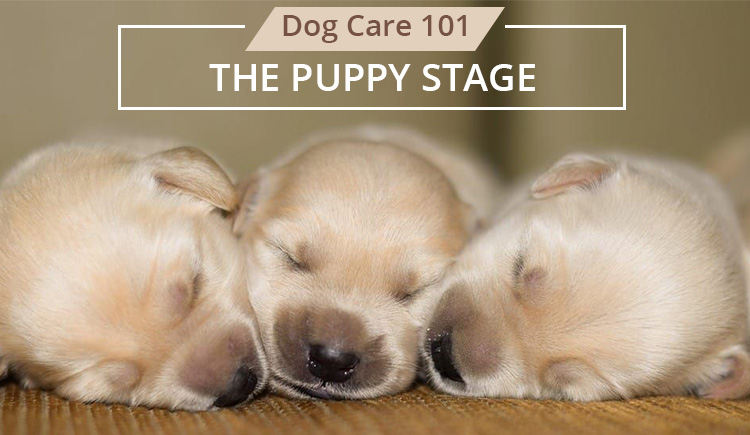If you read our last blog titled “Dog Care 101: For New Dog Parents”, then that’s great, but if you haven’t, you should first check that out before giving this a read.
So now that you have brought a furry munchkin to your home and have a fair idea about how and what to do and what not to, it is important to note some things. Every stage in the life of a dog has its own unique story. In this blog segment, we will take you through the various stages during puppyhood. This will immensely help you while taking care of your fur buddy as well as give you a greater insight about dogs in general.
Dog Care 101: Puppy Stage
The puppy stage can last longer than you expect. Generally speaking, puppyhood can last between six to eighteen-odd months, and even beyond. We’ll break them into smaller segments so that you can have a clear idea about what we’re talking.
Stage 1 – Neonatal Period
During this stage (neonatal period) of their lives, puppies cannot see or walk. They can only taste and touch. And it is during this stage that puppies will be most influenced by their mother and will learn a few social skills. Also, they will be requiring milk every couple of hours. In case, the puppy’s mother is not around (most likely she will not because you adopted one of her litters, right?), a commercial milk replacer should do the work.
Length – 0 to 2 weeks
Stage 2 – Transitional Period
Once they are over 2 weeks old, puppies enter the transitional period. Here, their eyes start to open, their legs are strong enough for them to move and walk around, their sense of hearing develops, and they get new teeth. Once they reach the end of this period, they will learn how to bark as well as figure out how to use the bathroom.
Length – 2 to 4 weeks
Stage 3 – Socialization Period
Your pup must’ve grown now into a big boy or girl. The next phase in puppyhood is the socialization period, and this particular phase is very crucial to introduce your pup to other people and pets. Allow them to socialize and mix with society so that they don’t succumb to anxiety and stress during the later stages of their lives. Once they near the 9-week mark or so, you can commence their home training.
Length – 4 to 12 weeks or 1 to 3 months
Stage 4 – Ranking Period
By now, your puppy must be having his or her own play group. At this phase of their lives, they are highly influenced by their playmates. They will now begin to comprehend and use ranking in terms of dominance and submission. Moreover, their teeth start to develop so get used to a lot of chewing and teething. Hence, at this stage, it is best to purchase a few toys for them so that your furniture and other items are safe from your puppy.
Length – 12 to 24 weeks or 3 to 6 months
Stage 5 – Adolescence
This is the fifth and final stage of puppyhood known as adolescence. By now your puppy should be done with his potty training and big enough to run around here and there. Puppies will slowly experience feelings of sexual behavior if they aren’t spayed or neutered. Normally, spaying or neutering is done when the puppy is over 6 months old. Furthermore, a second chewing phase will start to develop when the puppy is around 7 to 9 months old. Make sure you have the necessary toys when that phase commences. And lastly, allow your dog to explore the environment when going out for walks. This will only benefit him or her in the long run.
Length – 24 to 72 weeks or 6 to 18 months
All puppies are not the same, and while some may move onto the next stage quickly, others may take their own sweet time. Thus, it is important to be patient and stick to the basics.
In our next segment, we will pour light onto the next stage in the life of a dog, i.e. the adult stage. So make sure you visit our blog section next week!

